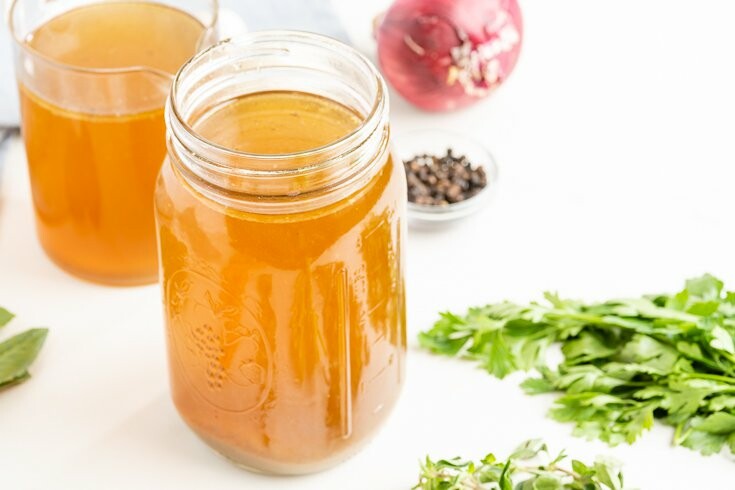
'Tis the Season!! I'm hearing from so many of you that the germs are invading your homes! Did you know that you don't have to suffer?! Many natural remedies are truly effective for these symptoms. There are several essential oils for cough that have antispasmodic, expectorant, antiviral and antibacterial properties. And, most importantly, these work to address the cause of your cough while simultaneously loosening mucus, relaxing your muscles and reducing cough intensity. Keep in mind, if you try one or two of the options below and they do not seem to have the effect you desire, try another combination. And it's ok to apply a combo of 2 oils diluted on your chest and fill your diffuser with a combo of 2 different oils to maximizes effectiveness.
The 8 Best Essential Oils for Cough
These essential oils for cough are effective in two ways — they help to address the cause of your cough by killing toxins, viruses or bacteria that are causing the problem, and they work to relieve your cough by loosening your mucus, relaxing the muscles of your respiratory system and allowing more oxygen to get into your lungs. You can use one of these essential oils for cough or a combination of these oils.
1. Eucalyptus
Eucalyptus is an excellent essential oil for cough because it works as an expectorant, helping to cleanse your body of the microorganisms and toxins that are making you sick. It also dilates your blood vessels and allows more oxygen to get into your lungs, which can be helpful when you are constantly coughing and having trouble catching your breath. In addition to this, the major component in eucalyptus oil, cineole, has antimicrobial effects against many bacteria, viruses and fungi.
The best way to use eucalyptus oil as an essential oil for cough is to diffuse 5 drops at home, especially right before bed. Eucalyptus can also be applied topically to your chest and neck to reduce cough severity, but only use a very small amount — starting with 1–2 drops diluted with carrier oil. Keep in mind, eucalyptus should not be used topically on children under the age of 2 and when it’s being used on children, do a patch test first to make sure they don’t experience adverse skin reactions.
2. Peppermint
Peppermint oil is a top essential oil for sinus congestion and coughs because it contains menthol and it has both antibacterial and antiviral properties. Menthol has a cooling effect on the body, plus it helps to unclog your sinuses and improve nasal airflow when congested. Peppermint is also able to relieve a scratchy throat that makes you dry cough. It’s also known to have antitussive (anti-cough) and antispasmodic effects.
Research conducted on healthy adults shows that peppermint oil relaxes the bronchial smooth muscles and increases ventilation, which is why it’s often used by athletes to enhance their exercise performance. It is these properties that allow peppermint to reduce coughing severity and improve your respiratory rate and ability to breath.
The best ways to take advantage of the many peppermint oil benefits for coughs and respiratory conditions is to diffuse 5 drops at home or work (you can combine this with eucalyptus), inhale it directly from the bottle or apply 2–3 drops diluted with carrier oil topically to your chest, back of neck and temples. When using peppermint topically, you can apply it alone, or combine it with coconut oil and eucalyptus oil to create a vapor rub. Remember that a little bit goes a long way, so start with just a few drops when using peppermint on your skin. Plus, don’t get it too close to your eyes or it can cause irritation. Do not use peppermint oil on the skin of children under the age of 2.
3. Rosemary
Rosemary essential oil has a relaxing effect on your tracheal smooth muscle, which helps to relieve your cough. Rosemary also exhibits antioxidant and antimicrobial properties, so it works as a natural immune booster.
A 2011 study published in Evidence Based Complimentary and Alternative Medicine found that a spray containing eucalyptus, peppermint, oregano and rosemary essential oils was able to improve symptoms of upper respiratory ailments among the 26 participants in the treatment group. By inhaling these oils five times a day for three days, researchers indicate that the participants reported greater improvement in symptoms including cough, sore throat and hoarseness. It only took 20 minutes after inhaling the essential oil spray that the participants noticed an improvement.
To use this essential oil for your cough, diffuse about 5 drops or combine 2 drops with half a teaspoon of coconut oil and rub it into your chest. Rosemary shouldn’t be used on children under the age of 4 and it’s not safe for women who are pregnant.
4. Lemon
Lemon essential oil is known for its ability to boost your immune system and support lymphatic drainage, which can help you to overcome a cough and cold quickly. It has antibacterial, antioxidant and anti-inflammatory properties, which makes it a great tool for supporting your immunity as you battle with a respiratory condition. Lemon essential oil also benefits your lymphatic system, which protects your body from outside threats, by improving blood flow and reducing swelling in your lymph nodes.
There are a few ways to use lemon essential oil to relieve your cough. You can diffuse 5 drops at home or work, and even add it to eucalyptus oil in your diffuser. You can also combine about 2 drops of lemon oil with a half teaspoon of coconut oil and rub the mixture into your neck to help drain your lymphatic system.
To use lemon essential oil internally, add 1–2 drops of a high quality, pure grade oil to warm water with honey or a glass of water. In an attempt to relieve your cough, you have to think about what’s causing it in the first place. Using lemon essential oil to kill toxins or bacteria in your home can be very helpful, diffuse with Thieves and add to your Thieves cleaning solution to disinfect all surfaces.
5. Oregano
Two active ingredients in oregano essential oil are thymol and carvacrol, both of which have powerful antibacterial and antifungal properties. Research suggests that because of its antibacterial activities, oregano oil can be used as a natural alternative to antibiotics that are often used to treat respiratory conditions. Oregano oil also exhibits antiviral activity and because many respiratory conditions are actually caused by a virus and not bacteria, this can be especially beneficial for relieving conditions that lead to a cough.
To use oregano oil for your cough, combine 1 drop of oregano with 1 drop eucaplytus and 1 drop lemon and equal parts carrier oil (like coconut oil) and apply it to your chest, back or neck or bottom of your feet. To treat bacterial conditions that are leading to a cough, add 1–2 drops to a glass of water twice daily or place in a capsule. Because taking oregano oil internally may interact with certain medications, I advise that you speak to your health care provider before using it. I also recommend using oregano oil internally only for a maximum of two weeks.
There’s not enough research to suggest that using oregano oil is safe during pregnancy, so use caution. To use oregano oil on children, simply dilute 1 drop with a teaspoon of coconut or olive oil and rub it into the soles of their feet.
6. Tea Tree
The earliest reported use of the tea tree, or malaleuca plant, was when the Bundjalung people of northern Australia crushed the leaves and inhaled them to treat coughs, colds and wounds. One of the most well-researched tea tree oil benefits is its powerful antimicrobial properties, giving it the ability to kill off bad bacteria that lead to respiratory conditions. Tea tree has also displayed antiviral activity, making it a useful tool for addressing the cause of your cough and working as a natural disinfectant. On top of that, tea tree oil is antiseptic and has an invigorating scent that helps to clear congestion and ease your cough and other respiratory symptoms.
To use tea tree for your cough, diffuse 5 drops at home or work, inhale it directly from the bottle, or dilute 1–2 drops with a half teaspoon of coconut oil and rub it into your chest and back of your neck. Tea tree oil is not for internal use and it shouldn’t be used during pregnancy.
7. Frankincense
Frankincense (from trees of the Boswellia species) has traditionally been touted for its positive effect on the respiratory system; it has traditionally been used in steam inhalations, baths as well as massages to help relieve a cough, in addition to catarrh, bronchitis and asthma. Frankincense is considered gentle and is generally well-tolerated on the skin on its own, but when in doubt, always dilute with a carrier oil.
8.Myrtle
Precautions
It’s important that your essential oils for cough are 100 percent therapeutic grade oils, especially if you are using essential oils internally. You should also become familiar with essential oil safety, especially if you are pregnant, caring for a child or planning to use the oils internally.
Of these seven essential oils for cough, eucalyptus, rosemary and tea tree should not be used during pregnancy. If you are pregnant and planning to use oregano oil, use caution and speak to your health care provider beforehand. When using essential oils for cough to soothe your child, it’s best to diffuse eucalyptus, peppermint, lemon, oregano and tea tree from a distance. If you use these oils on your child’s skin, always use a carrier oil and only very small amounts of the essential oil. Plus, do a patch test first.

USING ESSENTIAL OILS TO BALANCE HORMONES IS ONE STEP
There are many things you can do to relieve hormonal imbalance naturally but essential oils can be particularly powerful. Clary Sage has been used since Medieval times to treat PMS, infertility, difficult or irregular menstrual cycles, lowered libido, and difficult menopausal symptoms like sweats and hot flashes. Lavender essential oil will promote relaxation and help you deal with any added stress caused by your hormone imbalance.
But first – realize that using essential oils to balance hormones is just one step you need to consider when looking for healing. Diet can play a huge role in hormone imbalance issues. For example, dairy often contains hormones that can throw your levels our of whack, while healthy nuts and seeds like hemp seeds can help bring hormones into balance.
I also want to make sure you aren’t making a hormone imbalance WORSE with toxic ingredients in your home. Did you know many air fresheners and fragrances have hormone disrupting ingredients in them? Many laundry care products also have dangerous chemicals – dyes, fragrances, and cleaning agents can all have negative effects on your body’s hormonal balance. As you look to heal your body with essential oils to balance your hormones, make sure you detox your home to eliminate harmful chemicals as well!
HORMONE BALANCING SERUM RECIPE
After creating your Hormone Balancing Serum, massage a few drops over your thyroid and adrenals (front of neck and low back) in the morning and before bed.
INGREDIENTS FOR HORMONE BALANCING SERUM RECIPE
- 10 ml Evening Primrose oil (you can use another carrier oil)
- 4 drops Clary Sage oil
- 4 drops of Frankincense oil
- 4 drops Lavender oil
- 4 drops Geranium
- 2 drops Ylang Ylang oil
- 10 ml Roller Bottle
HOW TO MAKE HORMONE BALANCING SERUM WITH ESSENTIAL OILS FOR HORMONES
- Put essential oils in roller bottle and fill with evening primrose oil.
- Massage over neck (thyroid) and along lower back/over kidneys (adrenals) morning and night.
WHY DO THESE ESSENTIAL OILS WORK TO BALANCE HORMONES?
Clary Sage – Clary sage is known to have anti-inflammatory and antidepressant effects, as well as shown to relieve cramps and pain from hormonal surges in women. This is a must-try for hormone balancing blends.
Frankincense – One of my favorite essential oils for overall balance and to enhance the effects of other essential oils in many of my blends.
Lavender – The restful anti-anxiety properties of lavender essential oil make it invaluable in this hormone balancing blend.
Geranium – An essential oil with proven benefits for libido, stress and other menopause or hormonal imbalance symptoms.
Ylang Ylang – The queen of essential oils, this floral essential oil is one I turn to for libido, stress and more.

What makes bone broth good for you?
The nutritional profile of bone broth depends widely on the kind of bones you use (you can use chicken, turkey, beef, pork, fish—anything!), your cooking time, and the way the animals were raised (grass-fed and pasture-raised animals will give you more nutrient density). But there are a few common things about bone broth that make it so awesome:
- It’s loaded with gelatin. The slow and low cooking helps to release the gelatin—which is a broken-down version of collagen—that is in the connective tissues and bones you use. Why is this a good thing? Well, major important areas of our body (like the lining of our gut and our own connective tissues and joints) are made from collagen—in fact, about 25% of our body is made of collagen! Some folks use gelatin or collagen supplements, but bone broth is another effective (and affordable) way to get your gelatin and collagen. Making sure you get an adequate supply of collagen has a ton of health benefits like helping you sleep better, making your skin more supple, protecting your gut lining, and making your joints less achy.
- It’s easy to digest. Sometimes the roughage of a huge salad is good for you, but sometimes—especially if you are fighting digestive disorders or your immune system isn’t up to snuff—easy-to-digest foods are the way to go. Bone broth is a wonderful marriage of easy-to-digest but still nutritionally powerful
Is bone broth some new fancy food trend?
While bone broth is quite trendy now, it is absolutely not a new food! Healing broths and stocks have been part of the vast majority of cultures for centuries. Chances are if you can speak with an elder in your community, they can tell you stories about healing bone broth and soups from their childhood. If you’d like to read more about traditional foods and how they are (unfortunately) missing from our current diets, I highly recommend checking out Nourishing Traditions by Sally Fallon. It’s an incredibly eye-opening look into how we’ve stripped away the traditional preparation methods for many of our foods in the interest of saving-time.
How to do you make bone broth?
While bone broth can be incredibly time-consuming to make (three hours at it’s fastest in your Instant Pot or up to two days using other methods), it is also incredibly simple. To make bone broth, all you have to do is:
- Cook or roast animal bones.
- Soak shortly in filtered water and apple cider vinegar.
- Add any seasonings or flavorings you prefer.
- Cook over very low heat until done. That’s it!
The vast majority of the bone broth cooking time is hands-off (we’re talking like 99% of the time).
How do you use bone broth?
You can use bone broth just like you would any other stock or broth. Use it to make chicken soup. Use it to cook rice. Use beef bone broth it in beef stew. Many bone broth fans also prefer to drink bone broth straight—as a sipping broth. The long-simmering of the broth gives it a complex, rich flavor that is cozy, comforting, and warm. I personally love having bone broth with ginger and garlic for immune supporting qualities! The gelatin in the broth is great for your skin and joints!
What are the best bones for bone broth?
I believe the best bones for bone broth are the ones you have! I always make bone broth after roasting a chicken—because those are the bones I have on hand. Waste not, want not! For the absolute highest collagen content in your broth (meaning it will gel the best), you’re looking for bones that are full of connective tissue. You want to use necks, feet, backs, joints, and knuckles where possible. I tend to keep some of these on hand in my freezer to add into a batch of bone broth whenever I want to boost the nutrition. Yes, I have a bag of chicken feet in my freezer! You can often purchase bones from local food co-ops.

